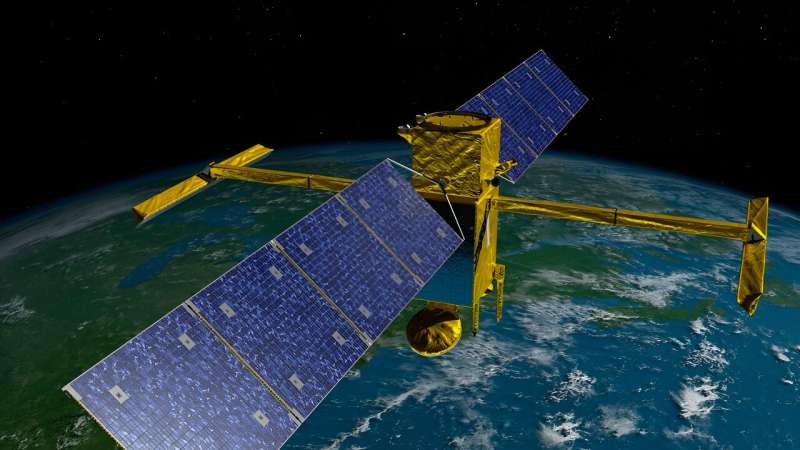This article has been reviewed according to Science X's editorial process and policies. Editors have highlighted the following attributes while ensuring the content's credibility:
fact-checked
proofread
Machine learning provides a clearer window into ocean motion

Oceanographers use satellites to peer down at Earth and measure the elevation of the ocean's surface. This information can help them map the circulation of the ocean's currents and understand the role this movement plays in heat transport and climate change. Launched in late 2022, the Surface Water and Ocean Topography (SWOT) satellite can take snapshots of sea surface heights at a finer scale than ever before possible—tens of kilometers instead of hundreds.
The catch? Simple, physics-based methods for translating sea surface heights into meaningful information about ocean currents do not apply at such high resolutions. This is because looking at the ocean so closely also means detecting waves beneath the water's surface. While these subsurface waves do not affect ocean currents, they add noise to observations of sea surface height.
Now, Qiyu Xiao and colleagues present a novel machine-learning method for using SWOT sea surface height data to estimate various aspects of current flow in the upper ocean. The method applies a computational approach inspired by human vision known as a convolutional neural network, which the research team trained on data from realistic simulations of sea surface heights and current dynamics. The findings are published in the Journal of Advances in Modeling Earth Systems.
The researchers demonstrated that their convolutional neural network approach can use fine-scale sea surface heights to estimate some characteristics of current flow. By improving understanding of how currents transport heat and carbon, scientists could better understand and predict climate change.
The researchers note that this initial achievement represents a proof of concept, and further research is needed to refine the new method before it can be reliably used with SWOT data.
In the meantime, SWOT will keep busy capturing high-resolution images of not only Earth's oceans, but also almost all surface water around the world, including lakes, rivers, and reservoirs.
More information: Qiyu Xiao et al, Reconstruction of Surface Kinematics From Sea Surface Height Using Neural Networks, Journal of Advances in Modeling Earth Systems (2023). DOI: 10.1029/2023MS003709
Provided by Eos
This story is republished courtesy of Eos, hosted by the American Geophysical Union. Read the original story here.




















